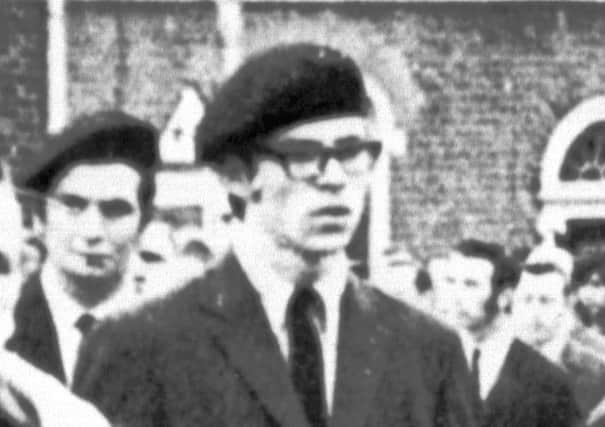Gerry Adams tries to duck IRA inquest Martin McGuinness is happy to attend


But in a legal letter the Sinn Fein president has not specifically denied being a member of the IRA at the time.
Mr Adams’ stance is in some contrast to that adopted by Martin McGuinness, who on Tuesday agreed to assist by appearing as a witness if necessary at the inquest into the death of Seamus Bradley during Operation Motorman in Londonderry in 1972.
Advertisement
Hide AdAdvertisement
Hide AdThe family of Mr Bradley – who allege that the 19-year-old IRA man was tortured and then shot while a prisoner of the Army during the attempt to regain control of ‘no-go areas’ – asked for both Mr Adams and Mr McGuinness to be called as witnesses.
Mr Bradley’s next of kin, his brother Danny, has made the request. His solicitor referred to the famous July 22 1972 meeting between the IRA leadership and the British Government in London, at which Mr Adams was present.
The meeting took place just nine days before Operation Motorman.
In legal submissions ahead of the inquest, Mr Bradley’s solicitor referred to “a widespread belief that at the relevant time he [Mr Adams] was a senior member of the Belfast Brigade of PIRA and its commander immediately after Operation Motorman”.
Advertisement
Hide AdAdvertisement
Hide AdBut a letter from Mr Adams’ solicitor to the Coroners Service which was sent last month said: “While Mr Adams concurs it is entirely appropriate that a proper investigation is carried out and that the forthcoming inquest is compliant with Article 2, he does not consider he is able to provide any assistance or give evidence concerning the facts surrounding the tragic death of Seamus Bradley.”
Mr Adams’ solicitor highlighted that the coroner must “consider whether the state’s investigative duty ... has been fulfilled”.
But he went on: “With these points in mind, it is difficult to understand what information Mr Adams could impart which would in any way assist the coroner in the exercise of his duties ... [Mr Adams] instructs us that he has no information whatsoever about the murder of Seamus Bradley other than what is in the public domain.”
The letter then adds: “While it is true as stated in the solicitor’s letter, Mr Adams was a member of the Republican delegation that met representatives of the British Government in 1972, the subsequent ceasefire had already broken down prior to Operation Motorman.”
Advertisement
Hide AdAdvertisement
Hide AdHowever, although Mr Adams has denied ever being a member of the IRA – something which has been derisively dismissed by some of his former comrades and also by senior security figures – the legal letter did not rebut that point of Mr Bradley’s submission.
The July 1972 meeting in London between two IRA leaders – Mr Adams and Dáithí Ó Conaill – and the Secretary of State was preceded a month earlier by a secret meeting between the IRA and senior officials authorised to do so by the Secretary of State.
A note of the meeting, labelled ‘Top Secret’ at the time but now declassified at the National Archives in Kew, described Mr Adams as one of two “IRA representatives at the June 1972 meeting in Ballyarnet outside Londonderry”.
The IRA-Government meeting was also attended by solicitor PJ McGrory (father of the now head of the Public Prosecution Service, Barra McGrory), who was described as “a solicitor and a wholly independent person”.
Advertisement
Hide AdAdvertisement
Hide AdAlthough PJ McGrory is now dead, the solicitors’ firm which bears his name still represents Mr Adams.
The officials’ note of the meeting described both Mr Adams and Dáithí Ó Conaill as “prominent leaders” in what had been an “indiscriminate campaign of bombing and shooting”.